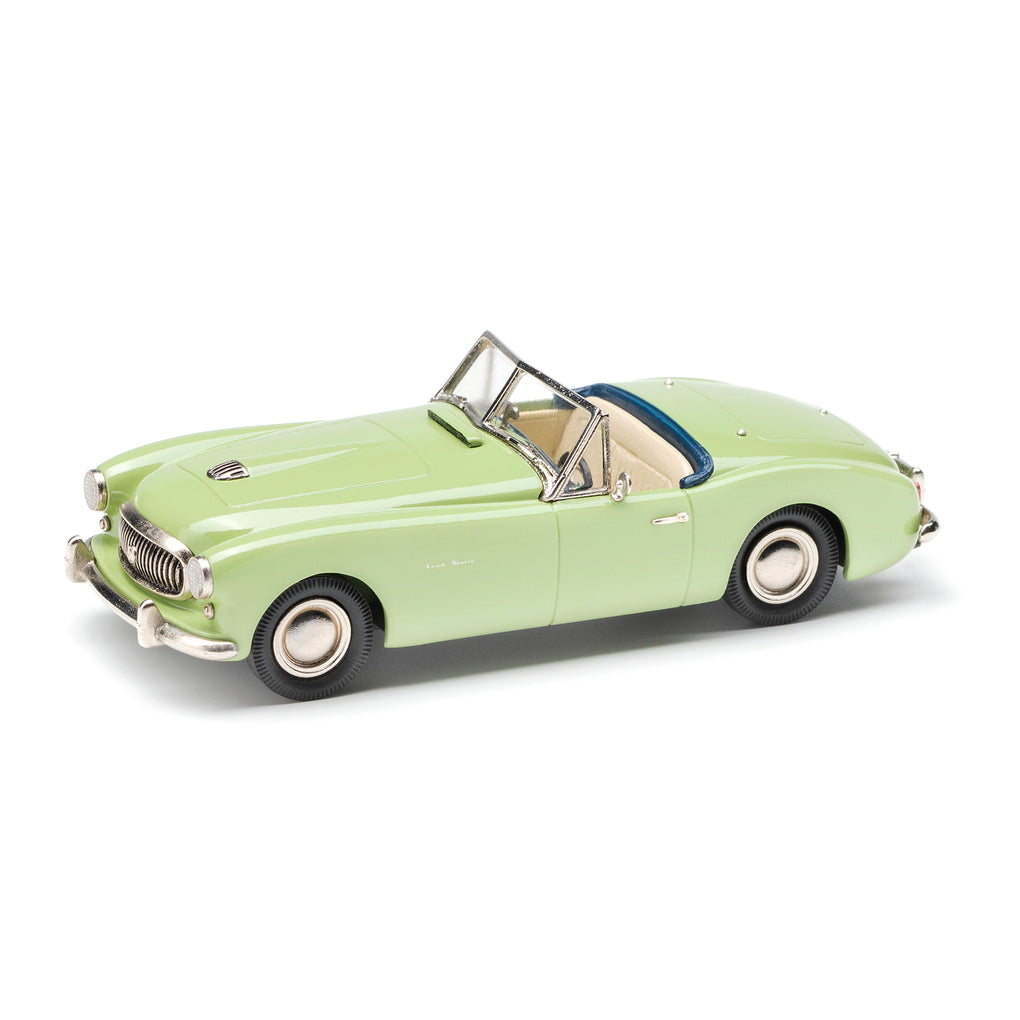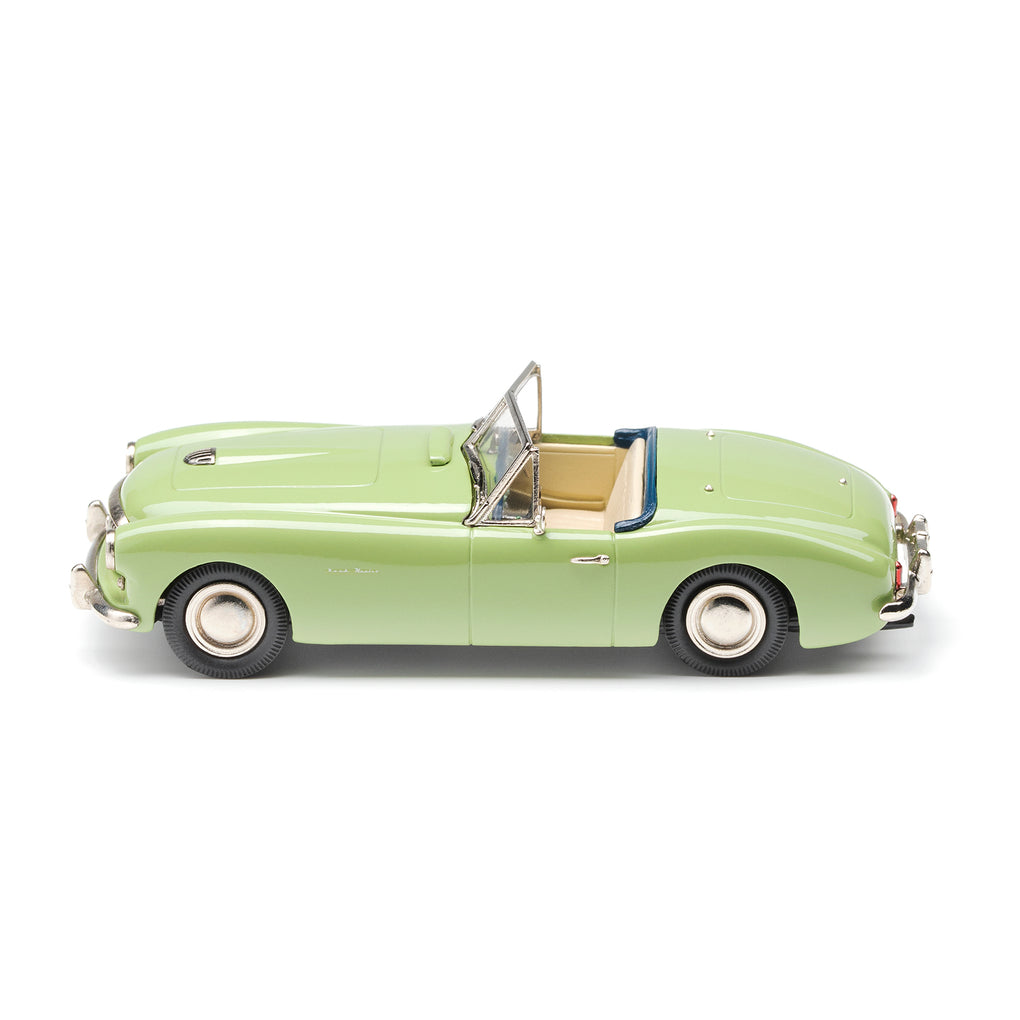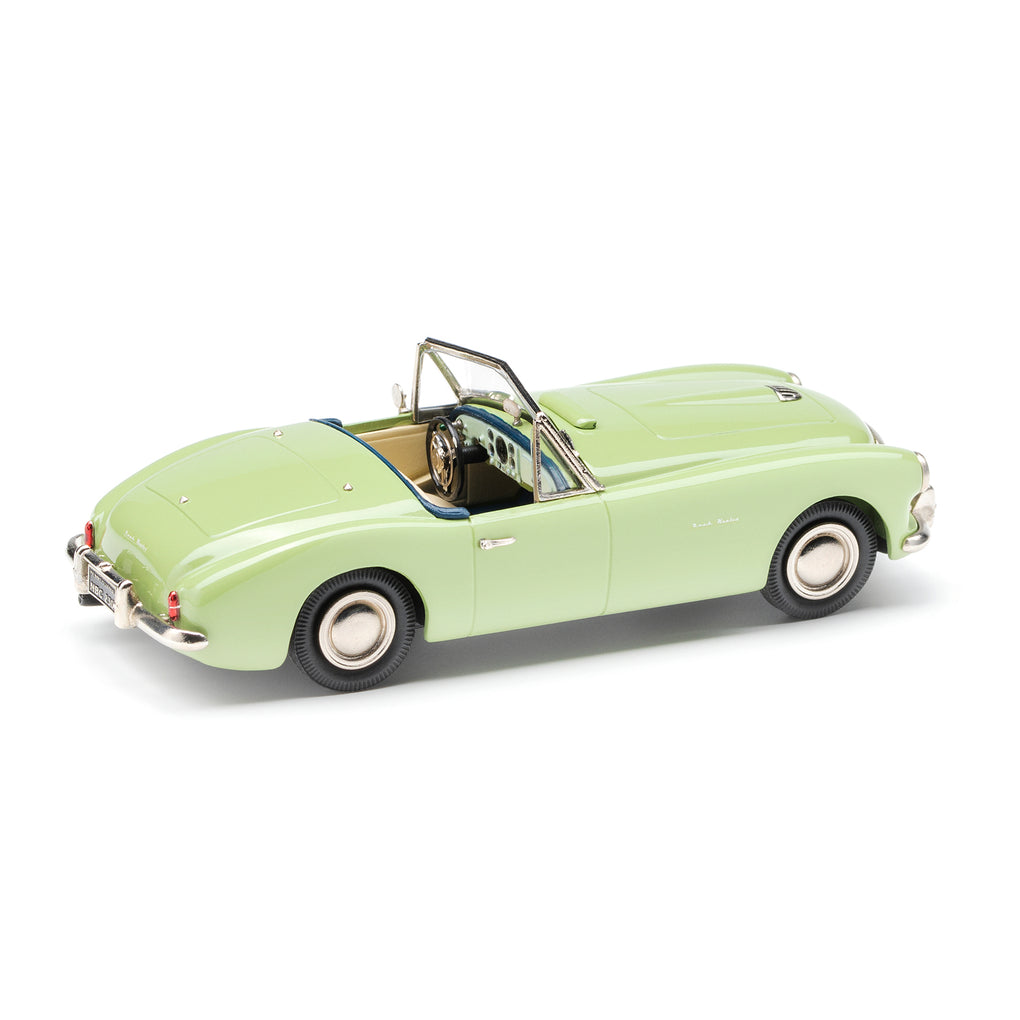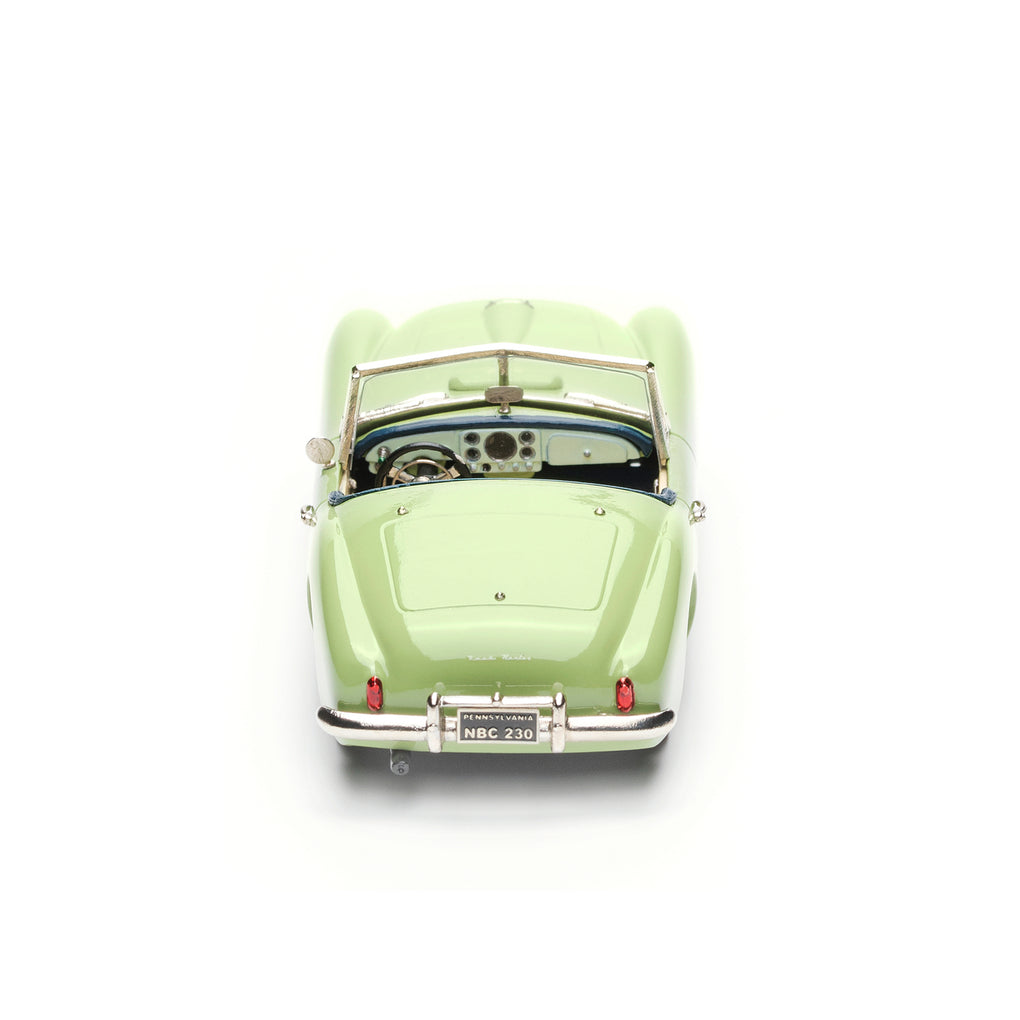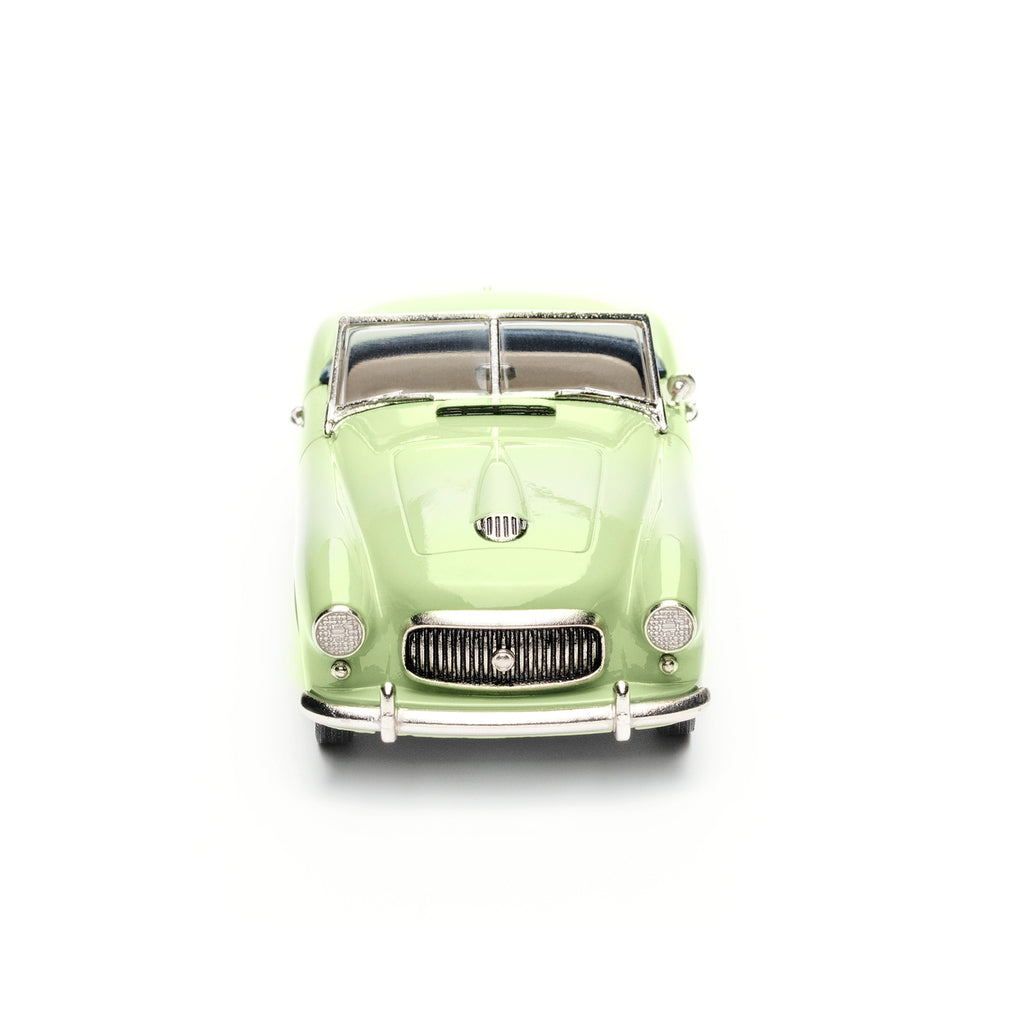1951 Nash Healey Le Mans Roadster
SKU: NBC230
AVAILABILITY: In stock
BODY TYPE: Convertible
MAKER: Nash
COLOR: Mint Green
MEASURE: 107mm or 4 ¼ inch
SCALE: 1:43
YEAR: 1951
DECADE: 50
The Nash Sports Car
Never have you seen a sports car like this!
Donald Healey was an engineer who first made his mark at Triumph in the 1930s. After World War II, Healey ventured out on his own producing cars with his bespoke chassis design, Riley 2.5 liter engines and aerodynamic bodies from various British coach builders.
In a quest to build ever better performing cars that could also be competitive on the track, he created a race car for the road called the Silverstone. Produced from 1949-51, these proved very fast and could easily achieve 100 mph right off the showroom floor. Briggs Cunningham asked Healey to build one with a Cadillac 331 cubic inch V8. This experiment proved successful enough for Healey to pursue buying more engines from Cadillac.
Donald Healey boarded the Queen Elizabeth to make the trip to the United States to meet with executives at General Motors when he had a chance encounter on board with George Mason, the President of the Nash Motor Company. The two men hit it off and when Healey explained why he was going to Detroit, Mason made him an offer. If Healey couldn’t secure the engines he needed from Cadillac, Nash would supply engines. Mason recognized right away that a joint venture between the two companies could produce a halo car for Nash.
Cadillac needed every engine they produced and couldn’t spare any for Healey. Healey and Mason quickly formed a partnership, and the Nash-Healey sports car was born. Beating the Corvette to market by a full two years, the Nash-Healey would be the first modern sports car produced exclusively for the American market.
Healey set to designing the new car himself. A prototype on a 102” wheelbase with body by Panelcraft of England was fitted with a 234.8 cubic inch high-compression straight-six Nash Ambassador engine. The car was shown at the Paris Motor Show in early fall of 1950 and production began a few months later in Warwick, England. The base price of $3,767 plus delivery from New York made the car uncompetitively expensive. Eventually only 104 cars found buyers before production ended in March 1951.

